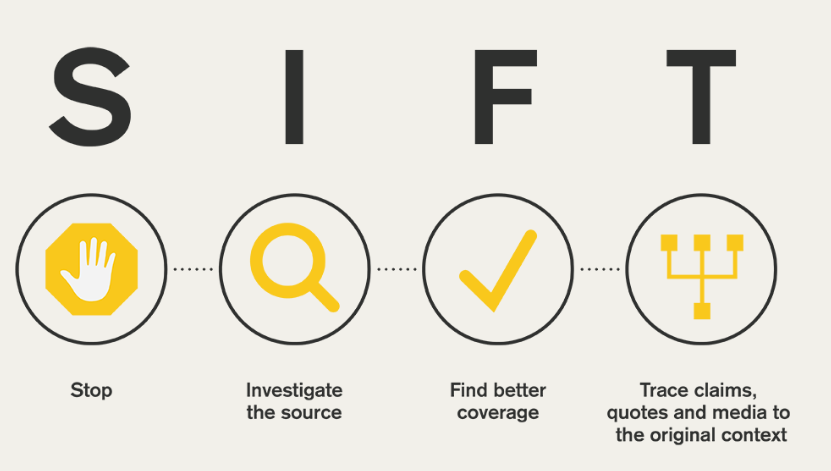How can you tell mis-/disinformation from credible news? What are the red flags? 
If one or more of the following characteristics is present in a news story, it very likely contains misinformation.
Getting an exact percentage is challenging but a growing number of social media accounts are believed to be fake, perhaps 50-75% or even more. Social media platforms have reported removing billions of fake accounts in recent years. However, studies have found that they often leave the majority of these reported fake accounts active, with one study estimating that 95% of fake accounts are still active three weeks after being reported.
Sources
Facebook says took down 1.3 billion fake accounts in Oct-Dec | Reuters
Why can't the social networks stop fake accounts? | New York Times
Fake accounts on social media, epistemic uncertainty and the need for an independent auditing of accounts | Internet Policy Review
Social media platforms leave 95% of reported fake accounts up, study finds | ArsTechnica
p>How to spot a doctored photo:
There are many quick, easy ways to reverse-search an image!
See these steps in action!
How to spot an altered video or "deepfake"
Check out this helpful article from the MIT Media Lab.
Try these tools to help debunk fake news video:
As a general rule, here are some tips and tricks for spotting fake social media accounts:
Profile Details and Photos
Examine the profile picture: Fake accounts often use professional-looking photos that seem out of place, avatars, or stolen images. Running a reverse image search can reveal if the photo is used elsewhere online.
Check for incomplete or generic profiles: Many fake accounts lack personal bios, details, or post history. Be cautious if the profile is missing basic information or seems robotic.
Look at the account name and username: Weird strings of letters/numbers or minor misspellings can signal inauthenticity.
Review activity and engagement: Genuine accounts will usually have posts, comments, and interactions with real friends or followers. Fake profiles might post irrelevant content frequently, have random or generic comments, or promote links aggressively.
Poor engagement patterns: Fake accounts often follow lots of people but have few followers, or vice versa. Watch for odd follower-to-following ratios.
Content quality: Repeated posts, spamming, and sharing the same or polarizing topics are red flags. Bots and fake accounts often post generic or unoriginal content repeatedly.
Check for account creation date: Accounts created recently that are very active can be suspicious, as real users usually have a social media presence that spans years.
Verify connections: Look for authentic connections, mutual friends, or shared networks. Lack of credible connections is a warning sign.
Watch for verified badges: Authentic or well-known individuals often have verified badges. Absence of the badge is not always proof of fakeness but, with other warning signs, adds suspicion.
Inspect URLs: Sometimes fake accounts set up strange URLs or those that don’t match the supposed name of the account holder.
Inconsistencies: Check if the same person has similar details or photos across different platforms. Differences may indicate a fake account.
Click the video and you will be taken to YouTube to view it.
"Watch out for scammers using fake Instagram profiles" | WXYZ-TV Detroit | Channel 7
Since numbers and statistics are a huge part of how we experience the world, Data Literacy, also sometimes called Visual Literacy, is an important component of Media Literacy. Below are some sources for cultivating healthy data literacy habits.

See the SIFT Toolbox is action with the claims below! ⬇️
OPT OUT!!
Worried about your online privacy? Opt out of as many people-search websites as you can. Here are the opt-out pages of several such popular websites.
Article: Data Brokers Are a Threat to Democracy [Wired]
LEARN MORE ABOUT PROTECTING YOUR ONLINE PRIVACY
Do Not Track is a personalized, 7-episode documentary series about privacy and the web economy.